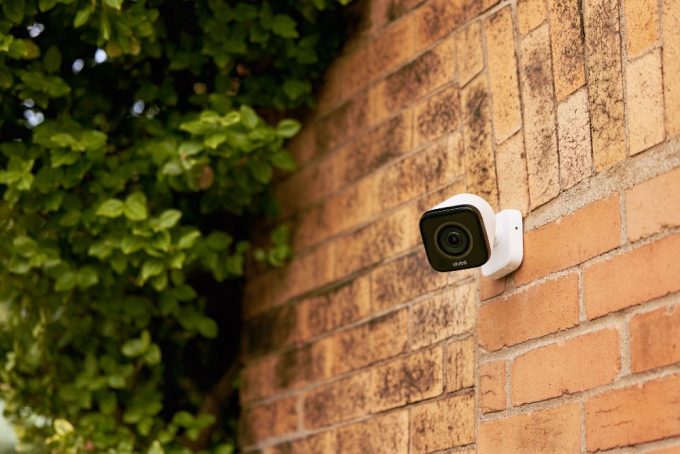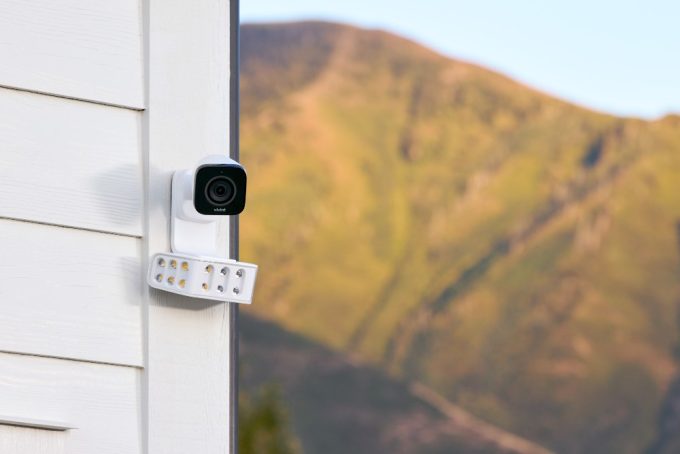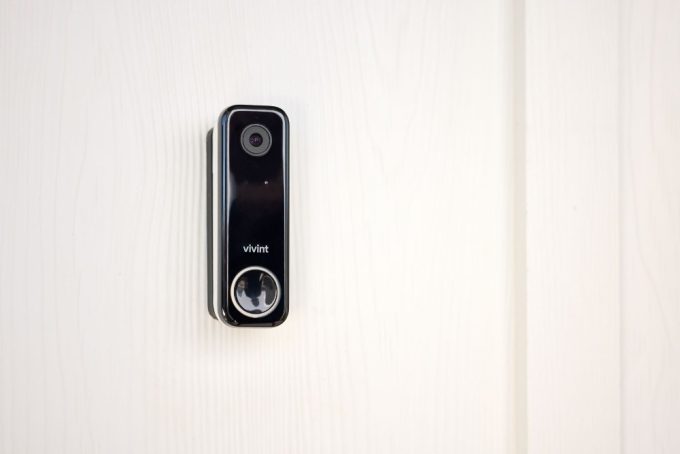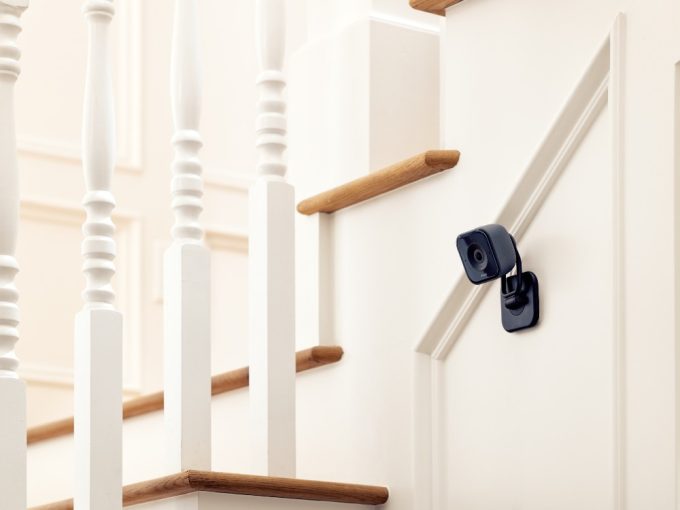How Do Wi-Fi Security Cameras Work? Understanding the Technology Behind Home Surveillance Imagine you’re on vacation and get a notification on your phone. It’s your Wi-Fi security camera showing movement in your backyard. Instantly, you can see what’s happening at home. This convenience and security are why Wi-Fi security cameras are becoming essential for modern homes.
In this guide, we’ll break down the technology and functionality behind Wi-Fi security cameras. You’ll learn how these devices operate, their benefits, and what to consider when choosing one. By the end, you’ll understand how Wi-Fi security cameras can enhance your home security.
Basics of Wi-Fi security cameras
Wi-Fi security cameras, often called wireless security cameras, have transformed home surveillance by offering a flexible and convenient alternative to traditional wired security cameras. Unlike their wired counterparts, which require physical connections to power and data, Wi-Fi security cameras operate wirelessly, making them easier to install and relocate as needed.
Key components of Wi-Fi security cameras include:
Wi-Fi security cameras offer a user-friendly, flexible solution for home surveillance, making them an excellent choice for enhancing your home’s security with minimal hassle.
How Do Wi-Fi Security Cameras Work
Real-time monitoring and notifications
Wi-Fi security cameras enable real-time monitoring through mobile apps, allowing users to access live video feeds from anywhere via a smartphone, tablet, or computer. These apps provide remote viewing capabilities, letting you check in on your home at any time. Real-time monitoring is crucial for immediate response to suspicious activity, giving homeowners peace of mind even when they are away.
Notifications are a key feature of wireless security camera systems. They send alerts to your mobile device whenever they detect motion. The combination of real-time monitoring and instant notifications enables proactive home security management, allowing users to take swift action if necessary.
Connecting to the Wi-Fi network
Wi-Fi security cameras transmit video and data wirelessly, relying on a stable internet connection. Connecting these cameras to your home Wi-Fi network requires a few devices and steps.
Setting up your Wi-Fi security camera
First, choose a suitable location for your camera with a strong Wi-Fi signal. Ideal spots are high-traffic zones or entry points like front doors, backyards, or garages. Once you’ve chosen a location, install the camera using the provided mounting hardware. Make sure it’s within range of your Wi-Fi router to maintain a stable connection, and depending on your power source, check that the camera is powered and ready to connect.
Tapping to the Wi-Fi network
Download and open the manufacturer’s app on your smart device to connect your camera to your wireless network. Then, follow the on-screen instructions, which typically involve creating an account and adding a new device. Some cameras may require you to scan a QR code with your phone to complete this step. Once connected, test the camera to ensure it’s transmitting video and responding to commands. Adjust the camera’s position to find the best spot for a strong signal.
Necessary equipment
A reliable Wi-Fi router is necessary for maintaining a stable connection. Ensure your router can handle the additional devices and bandwidth the camera requires. A strong and stable internet connection is also needed for real-time video streaming and alerts.
If you experience lag or connection issues, consider upgrading your internet plan. Some Wi-Fi surveillance cameras offer the option to connect via Ethernet for a more stable internet connection. This is especially useful if the camera’s location is close to the router and you prefer a wired connection.
Tips for a stable connection
To ensure even coverage throughout your home, place your router in a central location, avoiding metal objects or thick walls that can interfere with the signal. If your camera is far from the router, consider using Wi-Fi extenders or mesh network systems to boost the signal strength in hard-to-reach areas. Check your internet plan to ensure it has sufficient bandwidth to support multiple devices, especially if you have connected several cameras or other smart home devices.
How do wireless security cameras get power?
Wireless security cameras can draw power from various sources. Here’s a look at the most common options:
Choosing the right power source depends on your needs and the layout of your property. Each option has advantages to enhance the effectiveness of your home security system.
Storage options: Cloud storage, local storage, and network video recorders
When choosing storage options for Wi-Fi security cameras, you can usually choose between cloud storage, local storage, and network video recorders (NVRs). Each option has unique advantages and caters to different needs and preferences.
Cloud storage
Cloud storage involves uploading video footage to a remote server, providing easy access from anywhere with an internet connection. This method offers several advantages, such as accessibility, automatic backups, and enhanced security measures provided by the storage service. However, cloud storage typically requires a subscription fee, and reliance on an internet connection can be a drawback if your network is unstable.
Local storage
Local storage involves saving footage directly onto a physical storage device such as a microSD card, hard drive, or video recorder. This option eliminates recurring subscription fees and doesn’t depend on an internet connection for access. However, local storage can have a limited storage capacity and be vulnerable to theft or damage since the data is stored on-site. Remotely accessing footage can be more complex compared to the seamless accessibility offered by cloud storage.
Network video recorders (NVRs)
Network video recorders (NVRs) store video footage from multiple cameras onto a centralized hard drive, offering a higher storage capacity than individual local storage solutions. NVRs can be more reliable than cloud storage, as they don’t rely on an internet connection for access, and they centralize your storage needs, making management easier. But like local storage, NVRs are susceptible to physical damage or theft.
Understanding motion detection and night vision
Wi-Fi security cameras enhance home security with advanced features like motion detection and night vision. Motion detection uses sensors to detect movement within the camera’s field of view, triggering recording and sending real-time alerts. Look for cameras with adjustable sensitivity, activity zones, and integration with other smart devices to minimize false alarms and focus on relevant activity.
Night vision lets cameras capture clear video in low-light or complete darkness using infrared (IR) LEDs. When choosing a camera, consider the IR range, image quality, and smart IR capabilities for effective night-time monitoring. These features guarantee that your camera can provide clear and detailed footage regardless of lighting conditions.
Two-way audio and communication features
Many Wi-Fi security cameras feature two-way audio, which allows homeowners to communicate directly with those seen on video using a built-in microphone and speaker. Two-way audio is commonly found in video doorbells and doorbell cameras, making it easy to manage visitors from anywhere using a mobile app. You can speak directly to someone at your door or on your property, even when you’re not home. For example, you can greet visitors, instruct delivery personnel, or warn off potential porch pirates.
Integration with smart home systems
Wi-Fi security cameras can seamlessly integrate with other smart home devices, improving your home security system’s functionality. These cameras can connect to smart home hubs via wireless technology, allowing for voice control and automation. For instance, you can use voice commands to show the live feed from your front door camera on your smart display.
Integration with smart home systems also enables advanced features like synchronized lighting and alarm responses. If your camera detects motion, it could do things like trigger smart lights or activate an alarm system. This interoperability makes managing your home’s security more convenient and efficient, leveraging the power of connected devices to provide comprehensive protection.
Security and privacy concerns
Wi-Fi security cameras offer numerous benefits but also have potential security and privacy concerns. One of the primary risks is hacking, where unauthorized individuals gain access to your security camera system. Hackers can exploit vulnerabilities to view your camera feeds, tamper with the surveillance system, or even turn off your cameras, leaving your home unprotected.
To mitigate these risks, implement these security measures:
These can help reduce the risk of unauthorized access and protect your privacy.
Wi-Fi security camera FAQ
What is the downside of Wi-Fi security cameras?
While Wi-Fi security cameras offer convenience and flexibility, they also have some drawbacks. One major downside is their dependency on an internet connection. If your internet goes down, your Wi-Fi signal is weak, or other wireless devices cause interference, your cameras may lose their ability to transmit data and send alerts. These cameras can also consume significant bandwidth, which can slow down your network, especially if you have multiple devices connected.
Do wireless security cameras work if the Wi-Fi is off?
Wi-Fi security cameras generally require an active Wi-Fi connection to function fully, but some features may still work without it. For instance, cameras with local storage can continue recording to a microSD card or a local DVR/NVR. However, you won’t be able to access live video feeds, receive real-time alerts, or control the camera remotely without Wi-Fi. To mitigate these limitations, consider hybrid systems that use Wi-Fi and wired connections or have built-in cellular connectivity as a backup.
Do Wi-Fi cameras need a router?
Wi-Fi security cameras typically need a router to connect to your home’s Wi-Fi network, which allows for remote viewing and alerts. The router facilitates communication between the camera and your smartphone or computer. However, there are alternative methods for connecting cameras without a router, such as using direct Wi-Fi connections or Ethernet cables. These methods can provide more stable connections but may limit the camera’s functionality and ease of access compared to a router-based setup.
Should I choose professional installation or DIY setup?
Choosing between professional installation and DIY setup for Wi-Fi security cameras depends on several factors. Professional installation offers the advantage of expert placement and configuration, ensuring optimal performance and coverage. It also saves time and effort, as technicians handle all aspects of the setup.
On the other hand, a DIY setup can be ideal for homeowners who are comfortable with technology and prefer a hands-on approach. Some wireless home security cameras are designed for easy installation, with user-friendly apps and step-by-step instructions. However, it may require more time and effort to ensure the system is correctly installed and functioning than if you hired a professional.
Added protection with outdoor security cameras, doorbell cameras, and floodlights
Enhance your home security with a combination of cutting-edge technologies designed to protect your property and deter intruders:
With these technologies, you can create a comprehensive security system that provides continuous surveillance, covers key entry points, and offers invaluable peace of mind for you and your family.
Stay informed and secure with Wi-Fi security cameras from OEM
Wi-Fi security cameras have revolutionized home security by offering real-time monitoring, easy installation, and seamless integration with smart home devices. Understanding the basics of these cameras, including their power sources, storage options, and advanced features like motion detection, night vision, and two-way audio, can help you select the right system for your home.
For security solutions, consider OEM’s range of advanced indoor and outdoor security cameras and professional installation services. Visit Vivint today to find the perfect system for your home and experience unparalleled protection and convenience.
Stay informed and secure with Wi-Fi security cameras from OEM
Wi-Fi security cameras have revolutionized home security by offering real-time monitoring, easy installation, and seamless integration with smart home devices. Understanding the basics of these cameras, including their power sources, storage options, and advanced features like motion detection, night vision, and two-way audio, can help you select the right system for your home.
Wi-Fi security camera functionality, How wireless security cameras operate, Basics of Wi-Fi security cameras, Wi-Fi camera connectivity explained, How Wi-Fi cameras transmit video, Wi-Fi camera streaming process, Wireless security camera signal range, Understanding Wi-Fi camera technology, Features of Wi-Fi-enabled security cameras, Pros and cons of Wi-Fi security cameras, Wi-Fi security camera data transmission,
Power options for Wi-Fi security cameras, How to set up a Wi-Fi security camera, Wi-Fi security camera app compatibility, Real-time monitoring with Wi-Fi cameras, Wi-Fi camera cloud storage options, Benefits of wireless security cameras, Wi-Fi camera image quality considerations, Limitations of Wi-Fi-based security cameras, Wi-Fi camera encryption and security





